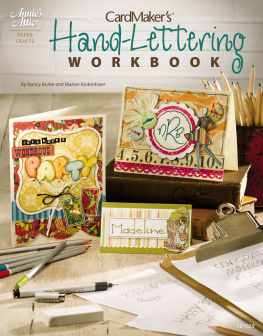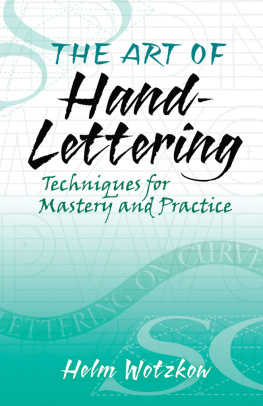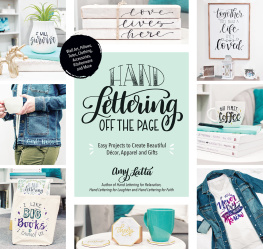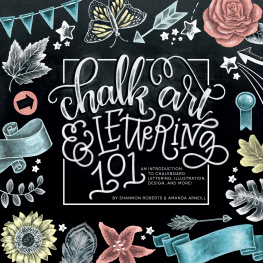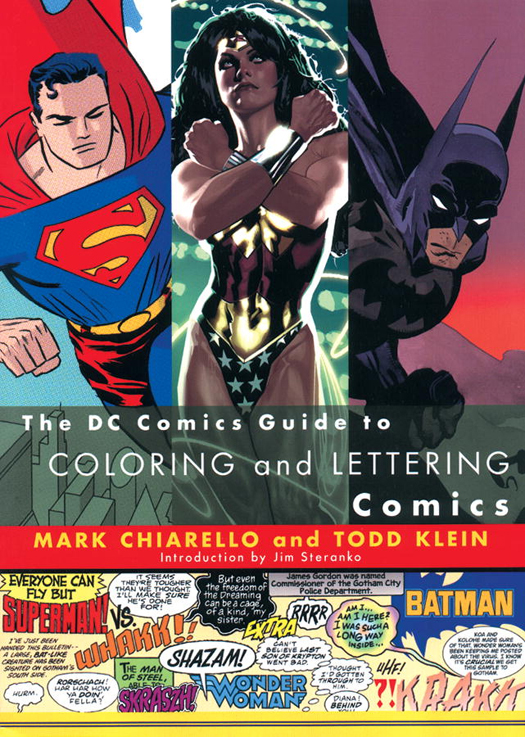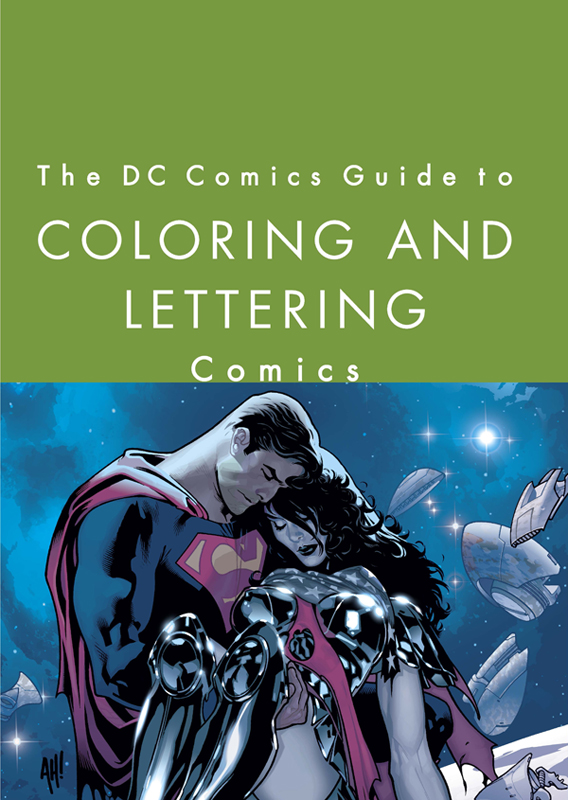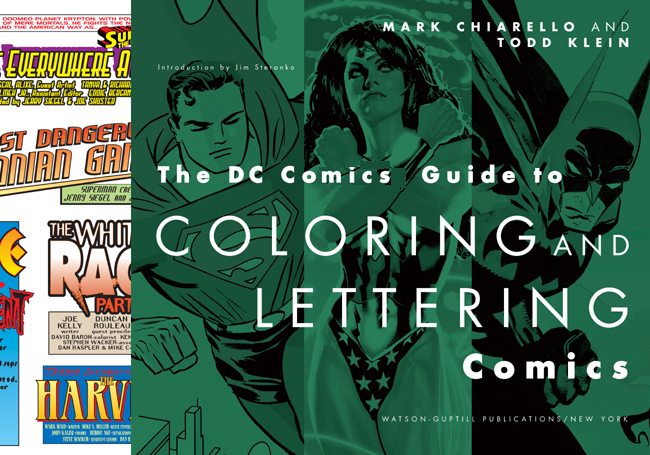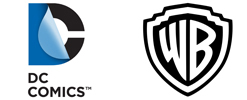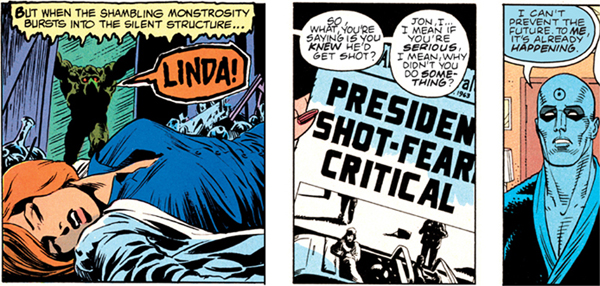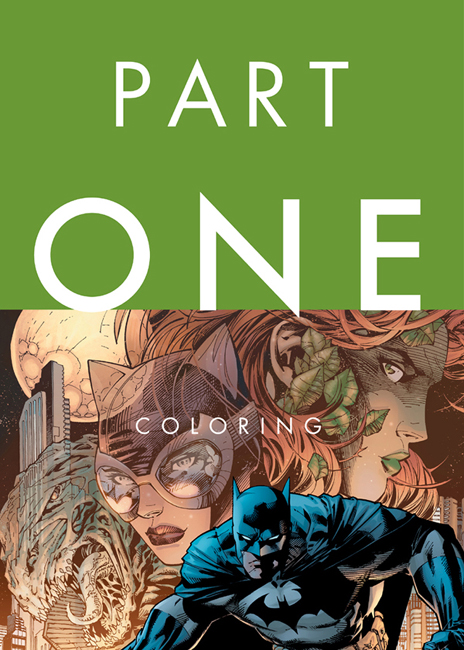The material in this book was first published in print in 2004. It has been reissued in eBook format, with no editorial changes, in 2013.
All rights reserved.
To Cathy, my favorite color.
Mark Chiarello
To the many fine letterers Ive known, worked with, and learned from; and to my wife Ellen,
for putting up with my long hours in the studio.
Todd Klein
CONTENTS
PART ONE:
COLORING
PART TWO:
THE COMPUTER AS A COLORING TOOL
PART THREE:
LETTERING
PART FOUR:
COMPUTER LETTERING
INTRODUCTION
AWAKENED AESTHETIC: THE POWER OF COLOR
In the process that begins with a blank sheet of paper, the Art of Coloring Comics can be the most fun (imagine being paid for a Crayola habit) or the most frustrating (having your peers refer to you as the Jackson Pollock of Comics). The act of selecting colors and integrating them within a panel frame requires skill similar to that of paintingexcept the image is already there.
So, whats the big deal? More than you realize.
Early craftsmen painted mens suits green and orange (so readers could easily keep track of characters), never dreaming that color could be used to help build narrative sequences, shift attention from one panel to another, punch up dramatic beats, generate atmosphere, create compositional balance, define emotions, heighten suspense and mystery, suggest heat and cold and desolation, even articulate flashbacks. Consequently, the icons who shouldered the comics universe for generations failed to embrace one of the most effective weapons available in their limited graphic arsenal: color .
If you doubt it, look at almost any comic published before 1985, apply the ideological concepts within these pages, and youll discover, more often than not, that color was simply another aspect of the assembly-line mentality that defined the mediuma stagnant element maintained by those who simply lacked the vision, talent, or courage to expand comics dimensions beyond the stereotypical form it had become.
Two reasons: the first is that (with the exception of comic-strip creators who colored their own material) the work was relegated to non-artists, a few of whom might qualify as craftsmen. The second is that page rates were minimal; colorists on salary had to produce ten or more pages in an average workday (those with authentic artistic ability soon became pencillers or inkers). Instead of being provocative and inspirational, the result was often rushed, insipid, undramatic, confusing, or absurdand failed to enhance the storytelling process, which is the heart of the comics form .
Instead of serving the material, it often did the opposite. Believe it or not, coloring was frequently left to the printer!
While it might seem sacrilegious to state, few, if any, artists and editors considered coloring as important as words and pictures, never quite understanding that good color can make a bad image appealing and that bad color can destroy an extraordinary image. Fortunately, their trivialization began to dissipate, primarily due to the self-conscious concerns of a new wave of creators who muscled the old guard out of their complacent niches.
When digital color materialized in the 80s, the option of coloring was thrust into creators hands (though not every creator can color). More importantly, the process was transformed by the possibility of utilizing millions of colors (previously, only a few dozen were available) and a spectrum of volatile and precise special FX. Predictably, the new weapon was abused as much as it was used with integrity; nevertheless, it caused color to become an equal element in comics artistic equation (and one so important that Ive christened the period from 1985 to the present The Digital Age of Comics.)
While much has been published about writing and drawing, the dynamics of coloring and lettering have been essentially ignored. Fortunately, this volume resolves that oversight.
Author/artist/designer Mark Chiarello has demonstrated his mastery of color in every medium from paint to Photoshop, and his expressive models here are designed to raise the aesthetic consciousness of those who read comics and those who create them, amateurs and experts, fans and pros alike. Within these pages, he reveals the secrets of his art, from the prototypical basics to the explicitly experimental, from creating coherent, dramatic color to the intricacies of its psychological useand beyond.
Calligraphic wizard Todd Klein mirrors the achievement with his overview on matters typographic, demonstrating that the Art of Lettering can be no less challenging than the other aspects which involve the puzzle of producing superior comicsa seamless collaboration between the eye, the heart, and the imagination.
STERANKO
Jim Steranko is a writer, musician, art director, illustrator, magician, pop-culture lecturer, fire-eater, editor, designer, escape artist, and publisher, in addition to being one of the first of a new wave of creators who muscled the old guard out of their complacent niches.
Throughout the history of comic books, coloring was never considered very important. It was always a rushed, last-minute part of the creative process, and very rarely thought of as creative. Well, times change. Coloring is now considered by many to be as important to comic books as any other aspect of the creative process. Without a good colorist, the visual punch and appeal of a comic book is in jeopardy.
Weve all seen dozens of examples of mediocre art jobs that were saved by great coloring jobs. Where mood, dimension, depth, and atmosphere are absent in the pencils and inks, a talented colorist can supply all of those life-giving elements. Conversely, weve seen first-rate artwork ruined by uninspired, hack coloring. Finely rendered and inked comics have been deflated too many times by coloring that was bland or garish.


